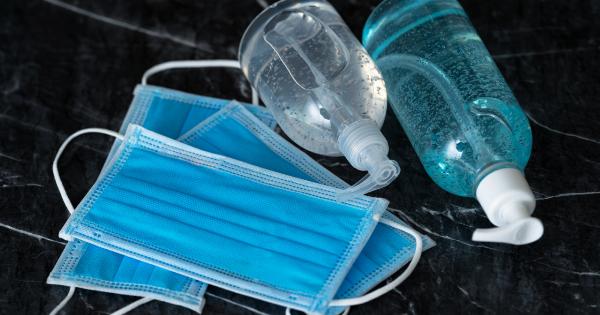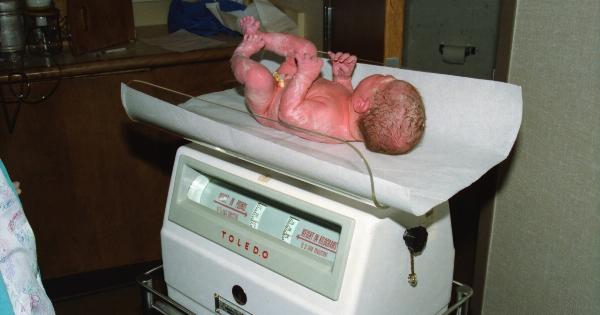Fevers are common in babies and are often a sign that their body is fighting off an infection. While most fevers are harmless and can be managed at home, a 40-degree fever can be a cause for concern and may require medical attention.
In this article, we will discuss the causes of high fevers in babies, symptoms to look out for, and effective ways to lower the fever and ensure your baby’s comfort.
Causes of a 40-Degree Fever in Babies
A fever occurs when the body’s temperature rises above its normal range. In babies, a 40-degree fever is considered high and can be caused by various factors, including:.
- Infectious illnesses such as common cold, flu, or ear infections
- Bacterial infections like urinary tract infections or pneumonia
- Inflammatory conditions like rheumatoid arthritis or Kawasaki disease
- Teething
- Vaccination side effects
If your baby’s fever persists for more than a day or is accompanied by other concerning symptoms, it’s essential to seek medical advice to determine the underlying cause and receive appropriate treatment.
Symptoms of a 40-Degree Fever in Babies
When your baby has a 40-degree fever, it’s crucial to keep an eye out for any accompanying symptoms that may indicate a more serious condition. Additional symptoms may include:.
- Irritability and excessive crying
- Difficulty breathing or fast breathing
- Lethargy or extreme sleepiness
- Seizures or convulsions
- Vomiting or diarrhea
- Refusal to eat or drink
- Rash or unusual spots on the skin
If your baby exhibits any of these symptoms along with a high fever, it’s crucial to consult a healthcare professional immediately for a thorough evaluation and appropriate treatment.
Lowering a 40-Degree Fever in Babies
Lowering a high fever in babies can help improve their comfort and prevent any potential complications. Here are some effective methods you can use:.
1. Maintain Adequate Hydration
Ensure your baby stays hydrated by offering frequent breastfeeding or bottle-feeding sessions. If your baby is older than six months and has started solids, you can also offer small sips of water or a pediatric electrolyte solution.
Hydration is crucial to prevent dehydration, especially when dealing with a fever.
2. Dress Your Baby Appropriately
Avoid overdressing your baby and opt for lightweight, breathable clothing. Dressing your baby in layers allows you to adjust their clothing based on their comfort levels.
Avoid wrapping them in thick blankets or using excessive bedding, as it may lead to overheating.
3. Use Fever-Reducing Medications
If recommended by your pediatrician, you can use over-the-counter fever-reducing medications such as acetaminophen or ibuprofen.
However, it’s crucial to follow the dosage instructions carefully and consult your healthcare provider before administering any medication to your baby.
4. Maintain a Comfortable Room Temperature
Avoid extreme temperature fluctuations in your baby’s environment. Keep the room cool but not cold, maintaining a temperature around 70-72 degrees Fahrenheit (21-22 degrees Celsius). This helps prevent overheating and promotes overall comfort.
5. Sponge Bath
A sponge bath can help reduce your baby’s body temperature effectively. Use lukewarm water and a soft cloth or sponge to gently wipe your baby’s forehead, neck, armpits, and feet.
Avoid using cold water or rubbing vigorously, as it may cause discomfort.
6. Monitor Fever Progression
Regularly monitor your baby’s temperature using a reliable baby thermometer. Note the temperature readings and any changes in their overall condition.
This information can be helpful when seeking medical advice or sharing details with your healthcare provider.
7. Provide Comfort and Soothing Techniques
Comfort your baby by providing gentle, soothing techniques. This can include holding and cuddling them, offering a pacifier, playing calming music, or engaging in quiet activities with them.
Comfort and reassurance can help ease their distress during their fever episode.
8. Consult a Healthcare Professional
If your baby’s fever persists for more than a day, is accompanied by severe symptoms, or you’re unsure about the best course of action, it’s essential to consult a healthcare professional.
They can evaluate your baby’s condition, identify any underlying causes, and provide appropriate medical interventions or guidance.
Conclusion
A 40-degree fever in babies can be concerning, but with proper management and medical guidance, most fevers can be effectively treated at home.
It’s essential to understand the causes and symptoms, closely monitor your baby’s temperature and overall condition, and seek medical advice when necessary. Remember to prioritize your baby’s comfort, hydration, and well-being while dealing with a high fever. With your care and attention, your baby will likely recover from the fever and resume their healthy, happy self.





























